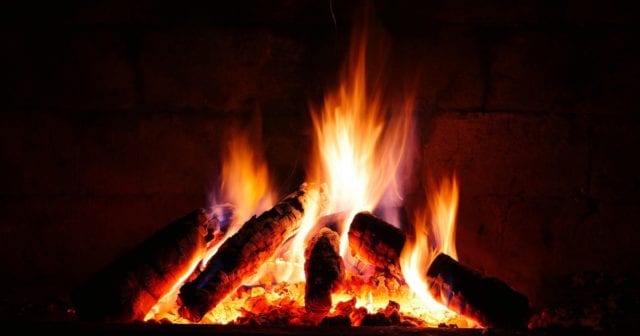Winter is just around the corner — don’t let the last few warm days fool you. If you’re dreaming of a crackling fire on a cold night, now is the time to think about your chimney and fireplace. Proper care and maintenance not only keeps your fireplace functioning properly, it prevents damage and disasters.
Here’s what you need to know.
Maintenance Before You Light a Fire
Don’t wait until after you light the first fire and notice a problem to have your chimney inspected. Go ahead and get your chimney looked over and cleaned now. You need maintenance on your chimney at least once a year, even if you don’t use it that much.
If you frequently use your fireplace during the winter, this will keep it in tip-top shape so you can keep using it. If you don’t use it often, having it inspected will make sure no animals have made a home in your chimney and that debris hasn’t blocked it.
Have Your Chimney Cleaned
While you need to have your chimney inspected yearly, a professional cleaning is something you can do on an as-needed basis. If the inspection yields no nests or critters, you may be able to skip the cleaning this year. But if you have a soot build-up of at least ⅛” it’s time for a cleaning. Chimneys can also build up creosote, a flammable material, that can cause a fire that can spread to your entire home.
A professional cleaning doesn’t just focus on the chimney. Here’s what you can expect:
- Sweeping the fireplace
- Checking the firebox, liners, smoke chamber, and flue
- Inspection to make sure the chimney is free of debris
- Offering recommendations on keeping your chimney cleaner longer
- Offering recommendations on potential repair or equipment replacement
Keeping Your Chimney and Fireplace Working Properly
Beyond yearly inspections and as-needed cleanings, there are several things you can do to help maintain the proper function of your chimney and fireplace while you use it.
- Regularly clean ashes out of the fireplace
- Only use properly seasoned firewood. One way to do this is to collect firewood a year before you need it and give it time to dry out properly.
- Completely open the damper before lighting a fire
- Only burn dry firewood or CSIA-approved manufactured logs
- Use a top-down burn method: place largest logs at the bottom, add a cross layer of smaller logs, add crumpled newspaper, and then top with kindling
As wonderful as a fireplace can be in the winter, it still presents a potential safety hazard in your home. Before the winter season arrives, make sure you have enough insurance to cover a total loss. Contact Charlotte Insurance today to update your policy limits or for a free quote on a new home insurance policy.

